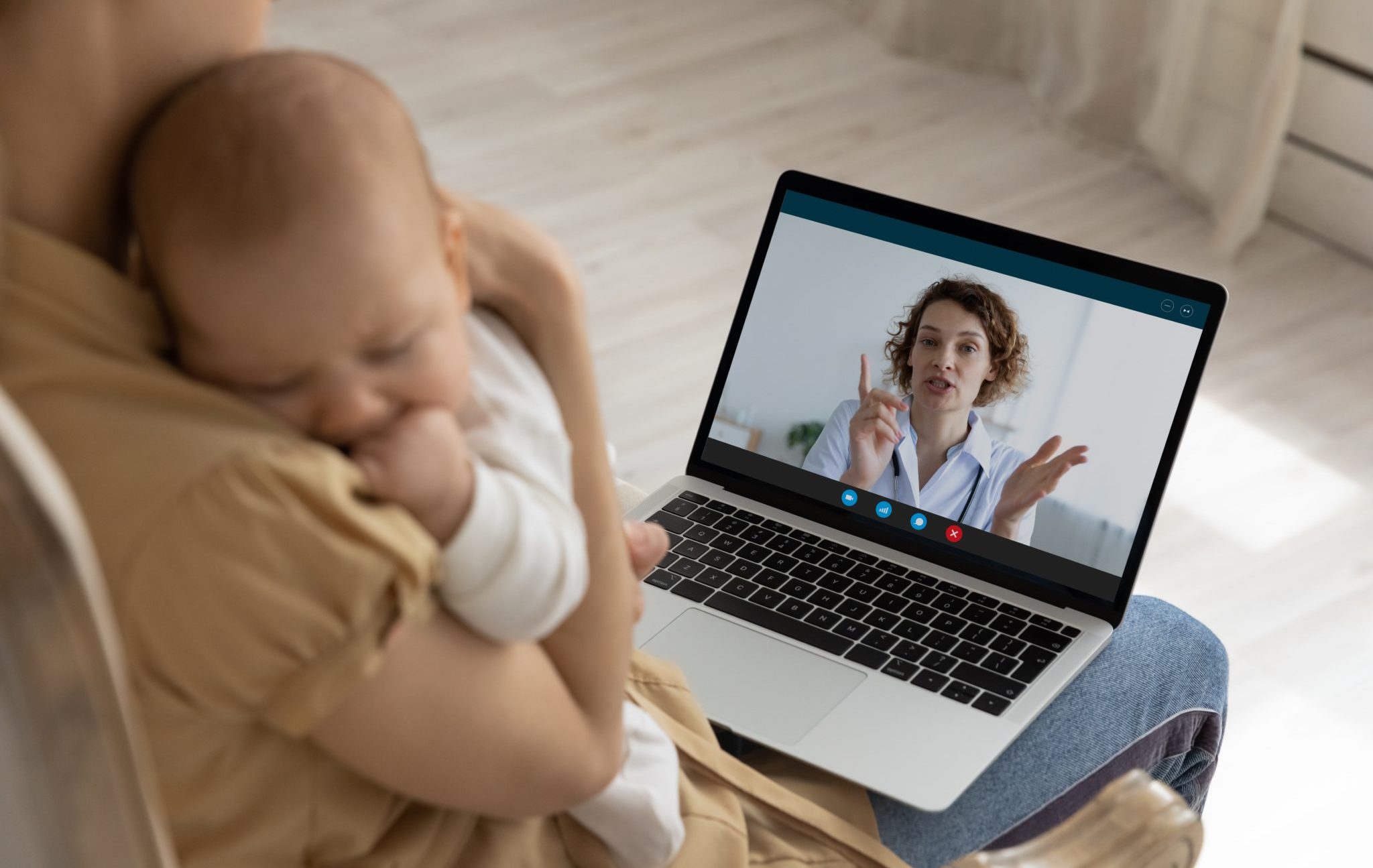Virtual Therapy, Real Problems

Recently, online sleuthing by concerned parents uncovered a discrepancy in the CDC’s language milestone trackers for children under age three, contradicting the milestone guidance set by the American Academy of Pediatrics. Although such a change seems harmless, very real lives are disrupted by changes like these.
The pandemic has led to skyrocketing milestone delays across the spectrum of childhood development, an increase in early intervention therapy referrals, and highlighted the gap between children needing therapy and children receiving therapy. All American children under three with milestone delays are entitled to publicly funded early intervention services, provided through the IDEA Act. Virtual therapies, the efficacy of which is yet to be seen, have become an increasingly popular stop-gap tool to meet rising demands on an overburdened and inefficient system.
Childhood speech delays have increased rapidly during pandemic restrictions. One Palm Beach based clinic reported in November a remarkable increase in speech-delay referrals to their clinic, as much as 364 percent. Other clinics report similar concerns with rising referral rates. One study finds “significantly reduced verbal, motor, and overall cognitive performance” in children born during the pandemic, “compared to children born pre-pandemic.” The kids most at risk, according to the study, are males and economically vulnerable children.
The American Academy of Pediatrics expects children to use at least 50 words at two years old, combining words to make two-word sentences. Saying fewer than 50 words at two is considered a concerning marker for a milestone delay.
The CDC now counters the benchmark set by the American Academy of Pediatrics, setting their new speech milestone marker at 50 words with two-word sentences for two and a half-year-old children, adding an extra 6 months to achieve this milestone. The guidance by the CDC is not supported by the American Speech Language Hearing Association (ASHA), which gives a minimum of 50 words as a two year milestone for children’s speech outcomes.
Why the recent discrepancy in milestones from the CDC? Milestone delays have risen during Covid, not only regarding speech, but across the spectrum of childhood development. But increasing rates of developmental delays do not warrant moving the goalpost for how delays are defined.
Perhaps the real reason for language milestone discrepancies between the CDC and the American Academy of Pediatrics is more complex than Covid politics. Acknowledging increasing milestone delays will lead to an increase in referrals to federally and state funded early intervention service programs. Legally, early intervention services are barred from placing children on a waitlist. However, there is a shortage of available service providers, and the early intervention service system is already overburdened.
Every American child aged three and under is entitled to early intervention services through the Individuals with Disabilities Education Act (IDEA). Early childhood intervention services cover services like speech, physical, and occupational therapies by state through a combination of federal and state funds. The pandemic has led to less children receiving intervention services, reports The Education Trust. Black and Latino children are less likely than their white peers to be screened for milestone delays and less likely to receive services, even in a normal year.
Even while early intervention service referrals are increasing, there has been a decrease in services provided during the pandemic. A system already pushed to the limits in a typical year has been overwhelmed due to Covid. Some states have all but halted early intervention therapy. Nearly three out of four families with disabled family members report losing access to at least one therapy service during the pandemic.
My own son, born in July 2021, is blind, with a variety of complex disabling birth defects. He has been referred for a variety of therapies since his birth last summer, and from personal experience the progress of getting regular therapy implemented can be lengthy and frustrating.
Meanwhile, the rise in virtual therapies as a sort of stop gap has been dramatic. The IDEA Act dictates early intervention therapies must be provided in natural learning environments practices (NLEP). I was told by my early intervention service caseworker that virtual therapy meets the NLEP requirement, as it’s still provided in the home.
Will virtual therapy be substituted indefinitely for in person services, under the guise of meeting a “natural” environment requirement, while the gap between children needing services and available state providers grows wider?
The effectiveness of virtual therapy is difficult to calculate. Even so, some states go to great lengths to demonstrate that virtual therapy is as good as in-person therapy. A growing body of research extols the virtue of therapy delivered via telehealth, “suggesting that it could be considered as an effective service delivery mode post pandemic.” Telehealth is heralded as erasing barriers to healthcare access, and even lauded as more beneficial for children with complex needs.
Most importantly, virtual therapies cut costs, and are still reimbursable with state and federal funds. In the future, early intervention services may be delivered entirely virtually to needy children, thanks to shiny new platforms and applications the government will be all too happy to purchase and reimburse.
I have been reminded to consider my son “lucky” to receive in-person therapy, a right afforded to him by law. Meanwhile, The American Medical Association is “supporting legislative proposals in Congress calling for the permanent lifting of geographic and site-of-service restrictions that would allow telehealth services to continue to be delivered nationwide and in patients’ homes.”
Small policy changes can make a difference for children receiving life-changing therapies required by law. As states cut costs and optimize efficiency, we must consider the real-world cost to those who can’t advocate for themselves.
Rachel Roth Aldhizer is an unlikely disability advocate and a stay-at-home mom to three children aged four and under. Rachel has written for Plough, Mere Orthodoxy, and the American Reformer.